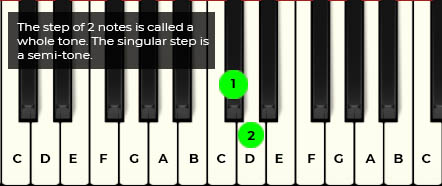Are you looking to for a simple way to learn how to play scales on the piano?
Then we’re here to help.
First of all, congratulations for biting the bullet and deciding to learn the boring part of music – it’s going to help you incredible amounts!
Learning how to play scales and expanding your music theory knowledge is crucial to your development in music production.
So get comfortable and let’s get started.
Scale Definition
Simply put: a scale is a series of notes played in a particular order.
That particular order is determined by how you want your scale to sound.
There’s quite a few different orders you can arrange the notes and different sounds you can get.
But…
Luckily for us, we’re only going to focus on major and minor scales for now (happy or sad).
Now we know what a scale is: how can we play scales on the piano?
First of all, we need to understand what semi-tones and whole tones are.
Whole Tones
A whole tone is made up of two semi-tones and is simply the space from one note to another.
For instance, take the jump of C to E and count all of the notes that occur during that space (including the black notes).
How many have you got?
You should have 2.

That’s all a whole tone is!
It’s just a fancy way of naming the space between two different notes!
And…
You guessed it, that gap is always two steps.
Semi-Tones
A semi-tone is just half of a whole tone.
So…
As we learnt above – a whole tone is just a jump of two notes (including the black keys).
Knowing this we’re able to realise that a semi-tone is just the singular note jump.
For example:
The jump from E to F is just one note! As is the jump from C to C# (the black note above C).

The Scale Formula
Now we know what whole tones and semi-tones are, all we need is the formula!
So, for any major or minor scale you need to play whole tones and semi-tones in a particular format to either make it major or minor.
Major: W, W, H, W, W, W, H
Minor: W, H, W, W, H, W, W
Using the knowledge of semi-tones and whole tones above, we can now play any major or minor scale on piano!
Why Should I Use Scales?
You’re probably thinking ‘ok so now we know how to make a scale. how does that help us?’
We’re so glad you asked!
Check out our other articles to apply your new-found knowledge!
Thanks for stopping by and we hope this helped!
